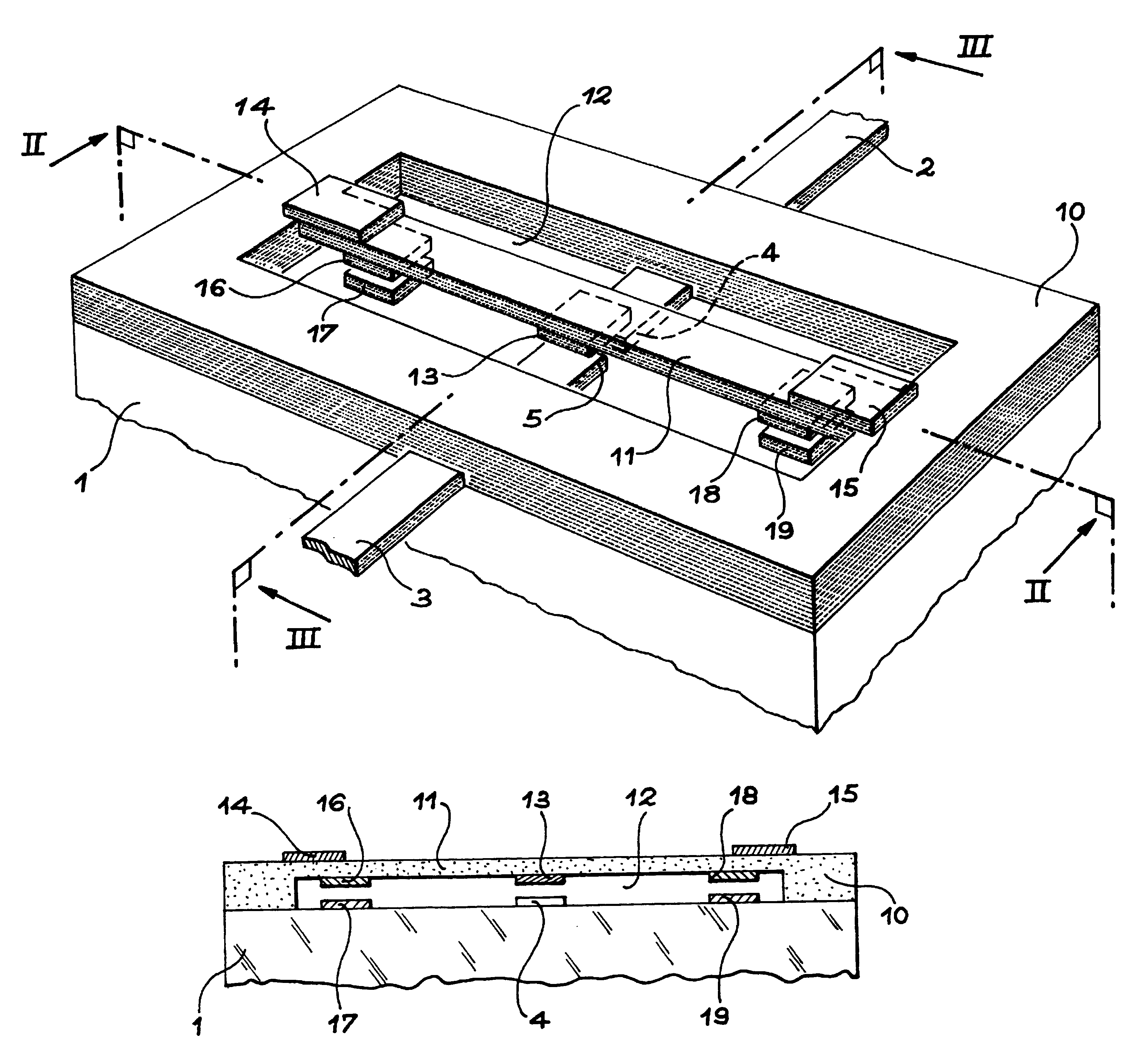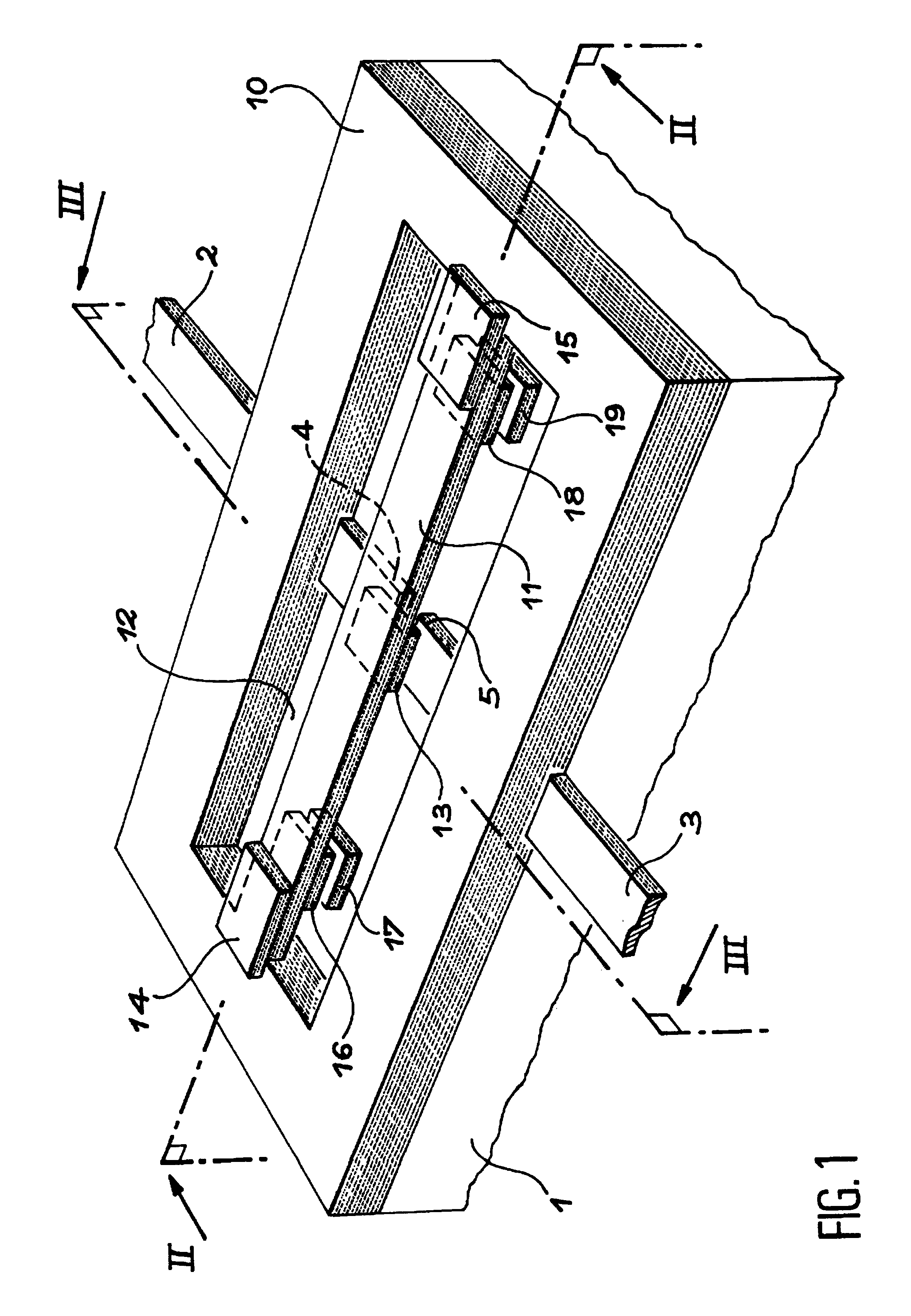Micro-device with thermal actuator
a micro-device and actuator technology, applied in the direction of thermal micromechanical switches, microstructural technology, electric/electrostrictive devices, etc., can solve the problems of pneumatic dampening, difficult technical production of the active line contact, and the delicate problem of the available power on the board of the micro-switch for this type of equipmen
- Summary
- Abstract
- Description
- Claims
- Application Information
AI Technical Summary
Benefits of technology
Problems solved by technology
Method used
Image
Examples
Embodiment Construction
FIG. 1 (perspective view) and FIGS. 2 and 3 (section views) illustrate a microswitch according to the present invention.
This microswitch is produced on a substrate 1, for example made from silicon, silica, glass or quartz. Substrate 1 supports a first section of line 2 terminated by a contact 4 and a second section of line 3 terminated by a contact 5. Contacts 4 and 5 are simply separated by a small interval.
Substrate 1 supports one or more layers, made from an electrical insulating material, designated as single reference 10 and from which a deformable element has been produced in the form of member 11 (for example made from silicon nitrite or silicon oxide) able to be deformed in a cavity 12 of layer 10 revealing the substrate 1 and contacts 4 and 5. Member 11 has, on the side of cavity 12, a conductive block 13 able to form an electrical link between contacts 4 and 5 when member 11 deflects in cavity 12. This microswitch may be achieved by the process divulged in document FR-A-2 ...
PUM
 Login to View More
Login to View More Abstract
Description
Claims
Application Information
 Login to View More
Login to View More - R&D
- Intellectual Property
- Life Sciences
- Materials
- Tech Scout
- Unparalleled Data Quality
- Higher Quality Content
- 60% Fewer Hallucinations
Browse by: Latest US Patents, China's latest patents, Technical Efficacy Thesaurus, Application Domain, Technology Topic, Popular Technical Reports.
© 2025 PatSnap. All rights reserved.Legal|Privacy policy|Modern Slavery Act Transparency Statement|Sitemap|About US| Contact US: help@patsnap.com



